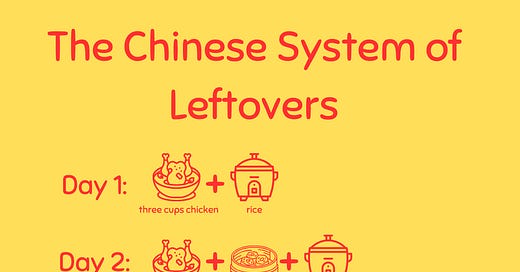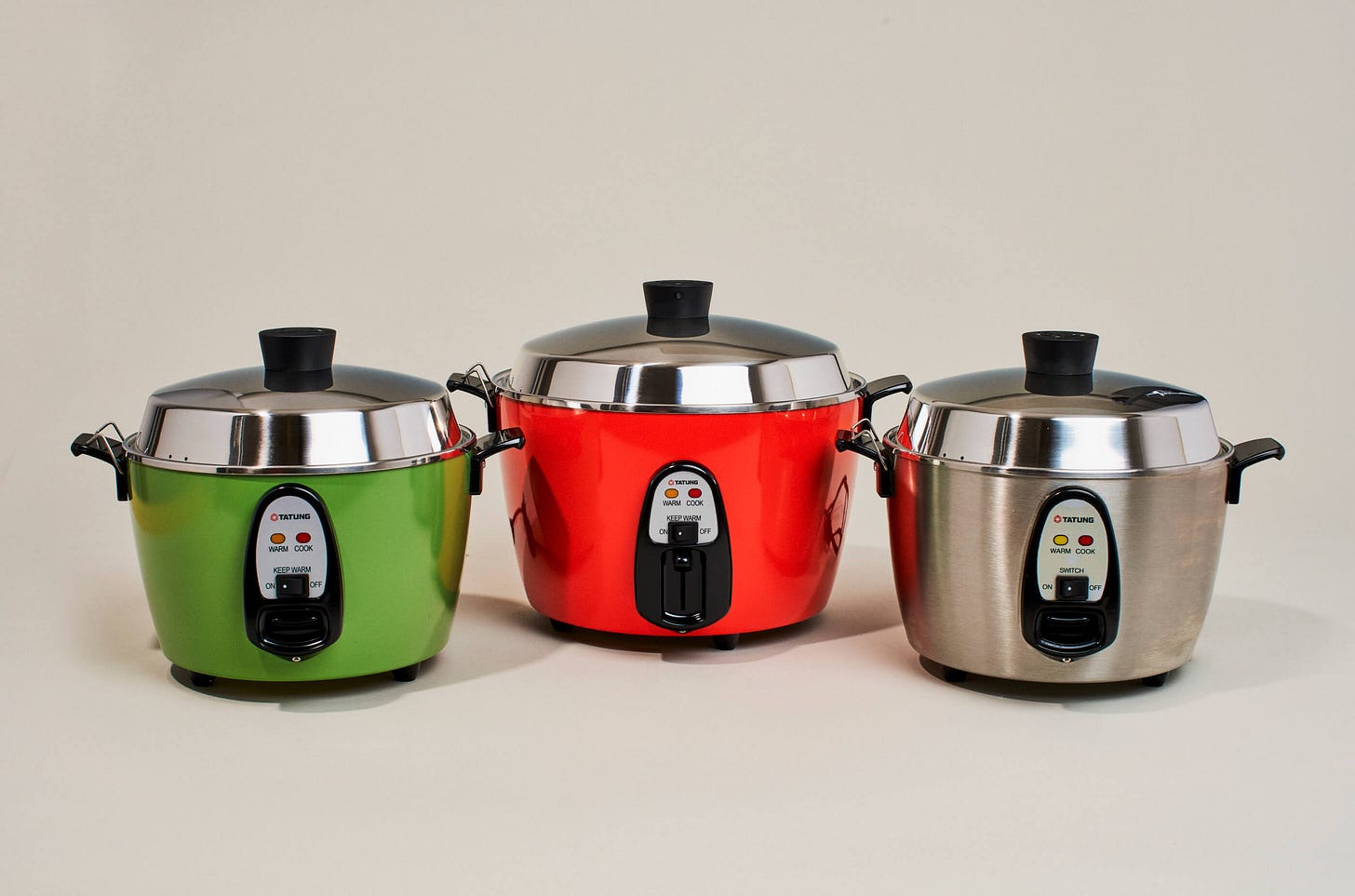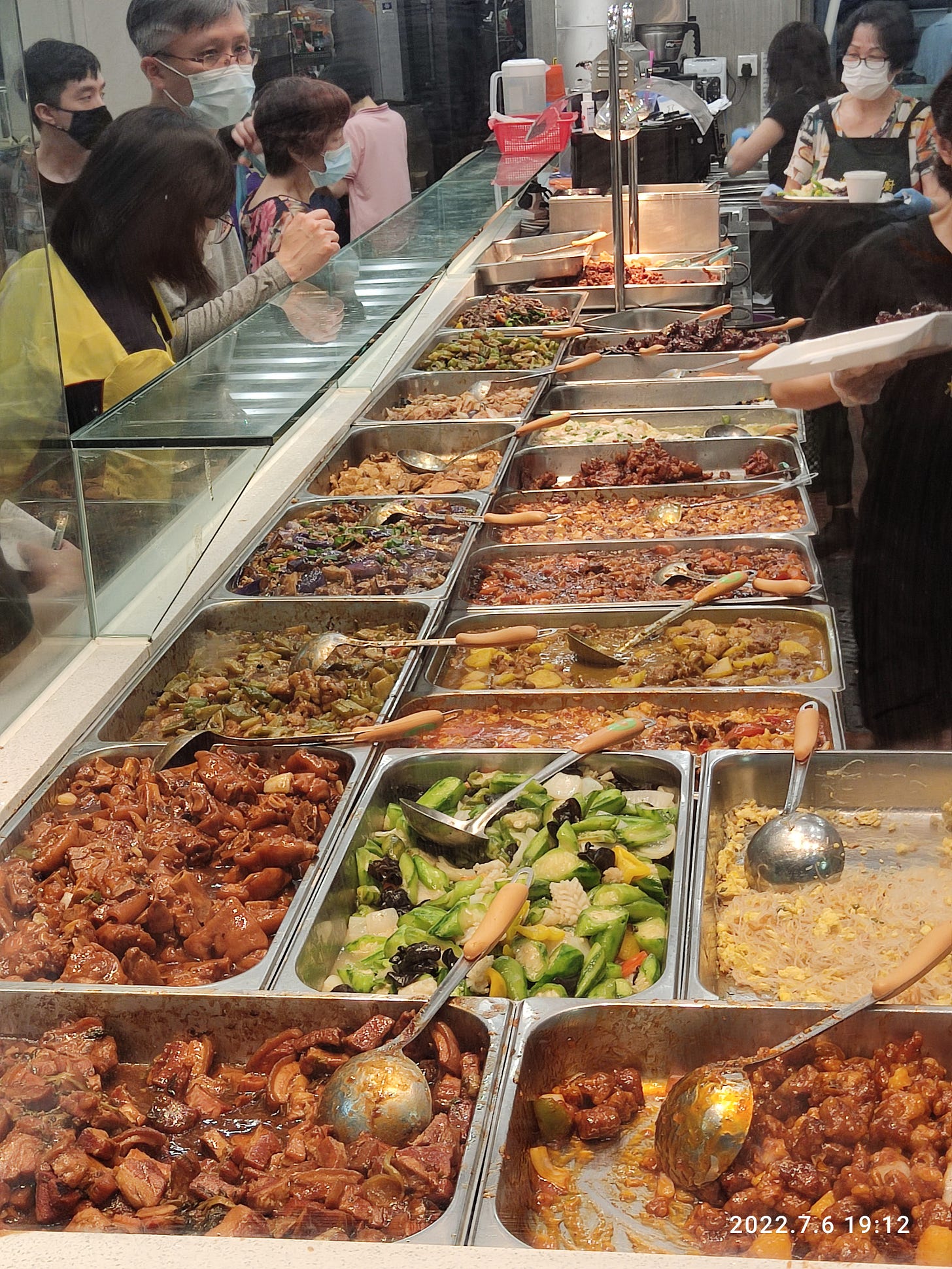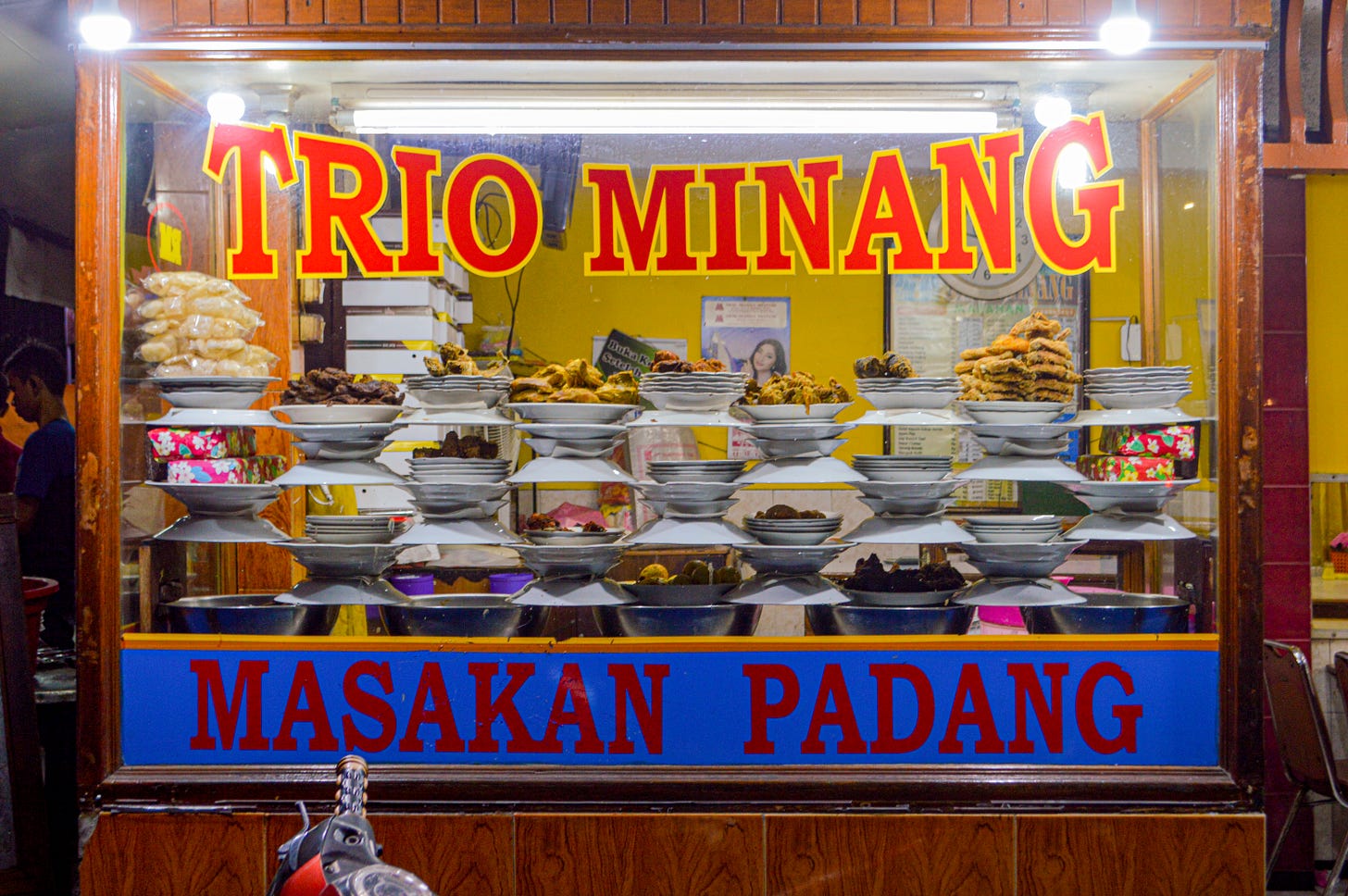The mother of my kids is Chinese-American, and shortly after we met, she casually remarked, “I love leftovers.” This was an odd thing for me to hear- I grew up in a house where leftovers were a consolation prize, not an object of desire. A plate of leftover pasta heated in the microwave was fine, but not anything to remark upon. Loving leftovers? Seemed odd to me.
After a while, I learned that in her family home, “leftovers” meant something completely different than in mine, and her leftovers were much, much better. I learned that in their Chinese household, leftovers are not just yesterday’s scraps- they are a system of eating. And the whole system is based on rice. Let me explain.
Let’s say it’s day one, and you make a big batch of Three Cups Chicken. (San Bei Ji). Along with the chicken you make a fresh pot of rice. Delicious. There’s more chicken than your family can eat in one meal, so you put it in the fridge.
Day two, and you and the kids make Pork and Chive Dumplings. When it’s time to eat, you bring the bamboo steamer to the table filled with dumplings, reheat the Three Cups Chicken and make a fresh pot of rice. Yum!
Day three, and there are leftover dumplings, so you pan-fry them, and there is still some chicken. So you stir fry some Gai Lan with garlic, make a fresh pot of rice, and serve it all at once. Another feast!
On day four, you’ve finished the chicken, but you stopped at the market and got a nice piece of fish, so you steam it with ginger and scallion. The leftover Gai Lan and a fresh pot of rice make a delicious light supper.
Day five! Leftover fish and gai lan, plus a yummy batch of Chinese scrambled eggs and tomatoes, and of course a fresh pot of rice.
Day six. Let’s make some Japanese-style Yakitori and a Taiwanese cucumber salad, serving it with fresh rice and the leftover eggs and tomatoes.
Do you get it? The Chinese System of Leftovers allows you to have a delicious family-style meal every night, with multiple foods to choose from, while only making one or two new dishes at a time. It allows you to capture the festive feeling of a banquet without the overwhelming work of making 4 or 5 dishes from scratch in a single evening. Restaurant leftovers, food gifts from friends, that zucchini that your neighbor insisted you take, all of that can find its way into your “leftovers” meal. Nothing brings happiness like a table full of little dishes of various savory things and a big pot of rice, allowing each person to fill their rice bowl, topping it with a bit of this food and a bit of that. It really is a great way to eat.
Of course, the whole system is based on one constant feature: the big, fresh pot of rice. The Chinese verb “to eat” 吃飯 (chīfàn) literally means “to eat rice”, so central is rice to the traditional Chinese diet. There is another fantastic Chinese word, 下飯 (xiàfàn) that means “accompaniment to rice” or “a meal based on small, savory dishes served with rice”. And this is really what the Chinese leftovers system is: a way to garnish rice. It’s easy for us Westerners to think of rice as a starchy side or a boring grain, but for most of Chinese history, rice has been synonymous with nourishment itself. My kids’ grandmother explained, “Rice is the main thing: all the other dishes are there to help you eat rice. When I was a girl, my mother taught me we couldn’t eat dishes by themselves- every bite of meat or vegetable must be accompanied by a bite of rice.” It’s no wonder that the rice cooker is the symbol of hearth and home in so many Asian cultures- it’s the source of the staple food an entire way of life is built around.
A seemingly infinite number of Asian cuisines are built around the “accompaniment to rice” idea, and it’s not just home cooking. A particularly important kind of restaurant in China is the 經濟飯 (jīngjì fàn) or “Economic rice” restaurant. This is the “out” version of the leftover system: the restaurant features a gigantic steam table with dozens of side dishes which can be chosen from. These are served alongside a big, hot scoop of rice.
While traveling in Indonesia, I was introduced to another kind of “accompaniment to rice” food, the Padang-style restaurant. This kind of restaurant is named after a Western Sumatran city and serves nasi Padang, or “Padang rice”. The most important feature of the Padang-style restaurant is a huge glass case at the front of the dining room, facing the street. Displayed in the case are a dozen or more dishes, from hard boiled eggs to fried fish to stews, vegetables, and curries.
When you enter the restaurant there is a flurry of activity: the servers bring dishes from the glass case to your table, where they are spread out before you like a emperor’s feast. A big, steaming bowl of rice is then brought to the table, and the diners garnish their rice with whatever side dishes suit their fancy. When the meal is done, the diner only pays for what they have eaten.
It’s a glorious way to eat- lots of intensely-flavored foods, there to make the rice more interesting, nourishing, and palatable.
Anyway, I’ve learned that a great way to eat leftovers- whatever’s in your refrigerator- is to make a big pot of rice and spread out the dishes on the table. A meal of leftover fried chicken, soup, greens, and sliced tomatoes with rice is a fantastic summertime supper. And you don’t have to limit yourself to Asian-style foods: Italian meatballs, fish sticks, cole slaw, and beef stew all go surprisingly well with a hot bowl of rice. I reckon pretty soon you’ll be loving leftovers too.









Hundreds of dishes x Hundreds of flavors. 百菜百味
Haha . I feel like my new dishes exists to pair my leftovers sometimes 😆
And not to mention how this system would exist in ur baking ingredients prep 😂